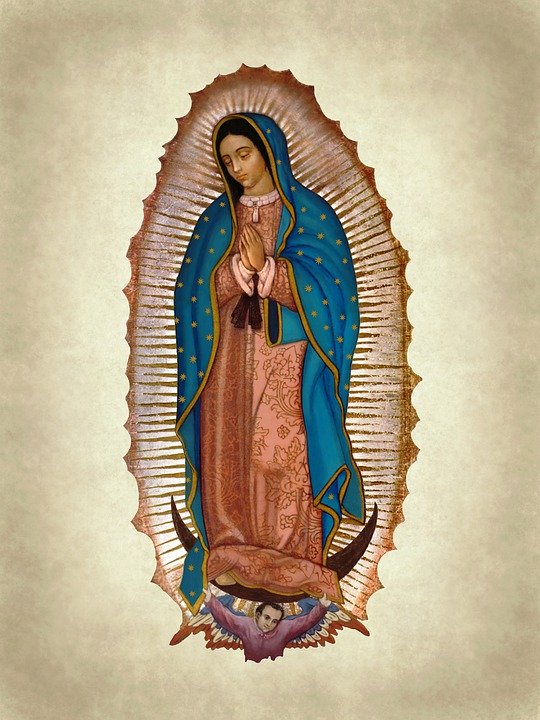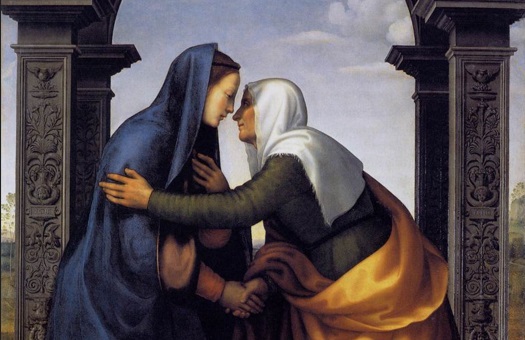
OUR LADY OF GUADALUPE
Many years ago, my co-worker – a priest from Czechoslovakia – and I were leading a group of candidates for initiation. It was Advent and we decided to explore some of the traditions of the season – one of which was the feast of Our Lady of Guadalupe. The priest, who was still learning both the language and cultural traditions of the Americas, began to recount the story of the Virgin appearing to Juan Diego in Mexico in the 1531. He told the candidates that it is common, when apparitions from Heaven occur, that they are accompanied by a miraculous sign which gives credibility to the event. The priest then proceeded to explain that, in this case, the Virgin left an imprint of her image on Juan Diego’s watch. He held up his arm to show off his own wrist-watch as he told the story. My first reaction was shock! Watch? It was the 1500s. There was no such thing. Then I realized what was going on. The priest had read the story of Mary leaving her image on the CLOAK of the visionary. He read the world CLOAK as CLOCK and then translated it into WATCH. I broke out in loud and inappropriate laughter at the translation error. Then in the most respectful way possible, I corrected the priest’s version of events.

The abbreviated story of the Virgin of Guadalupe is this. Mary appeared to an indigenous man named Juan Diego at the hill of Tepeyac outside Mexico City. Speaking in his native language of Náhuatl, she requested that a church be built in her honour. Obediently, Juan visited the local bishop and made the request. Not surprisingly, the bishop was incredulous and asked for a sign of the Virgin’s identity. The sign came in two-fold fashion. Guadalupe instructed Juan Diego to return to Tepeyac. There he found Castilian roses (not native to Mexico) blooming in the cold of December. She arranged these in his tilma (a sort of cloak… but definitely NOT a clock). He returned to the bishop with these miraculous flowers and, when he poured them out onto the floor, he revealed an image of the Virgin of Guadalupe herself imprinted on his cloak. A church was built in honour of Guadalupe that continues to be one of the most important pilgrimage sites in the world.
In the story that began this reflection, we see an instance of language and cultural experience being a barrier to understanding. In Guadalupe, however, we have a figure who builds bridges across culture and language. She chose to appear to an indigenous man from a conquered people. She then spoke to him in his native language, thereby affirming it as a vehicle for divine communication and declaring him as worthy of God’s love and care. She used roses from the land of the conquerors and transformed them into an image that spoke to both Spaniard and Aztec alike.
In her image on the tilma, Guadalupe is a dark-skinned, pregnant woman – very different from the images that graced the churches. There are symbols of flowers and birds on her clothing which indicated to the Náhuatl speaking people that this was an image both beautiful and true. Her entire image is a constellation (quite literally… it is full of stars) of Náhuatl symbols. With these symbols, she was able to communicate the gospel to people in ways that the missionaries were previously unable to do. However, her image and manner of appearing also communicated back to the missionaries the important message of affirmation for the indigenous people challenging their sins of racism, imperialism and oppression.
Devotion to Nuestra Señora de Guadalupe may have originated in Mexico, but she is a Mother for all People – especially the excluded and marginalized. She brings wisdom and understanding that bridges cultures and communicates across language barriers. Watches, clocks and cloaks notwithstanding.
–Christine Way Skinner
Christine Way Skinner is a Lay Pastoral Associate at St. John Chrysostom Parish in Newmarket, ON. She received a Bachelor of Arts in Theology degree from St. Francis Xavier University and a Master of Divinity from Harvard Divinity School. She would probably have finished the doctorate in theology she began years ago if she and her husband Michael had not begun raising a large family. When she is not doing laundry, driving her children to activities or trying to find inclusive, compelling and creative ways to pass on the church’s 2000 year old traditions, you can find her looking at art, playing music, reading, gardening and playing board games with her children. Christine’s publications can be found and purchased here.
